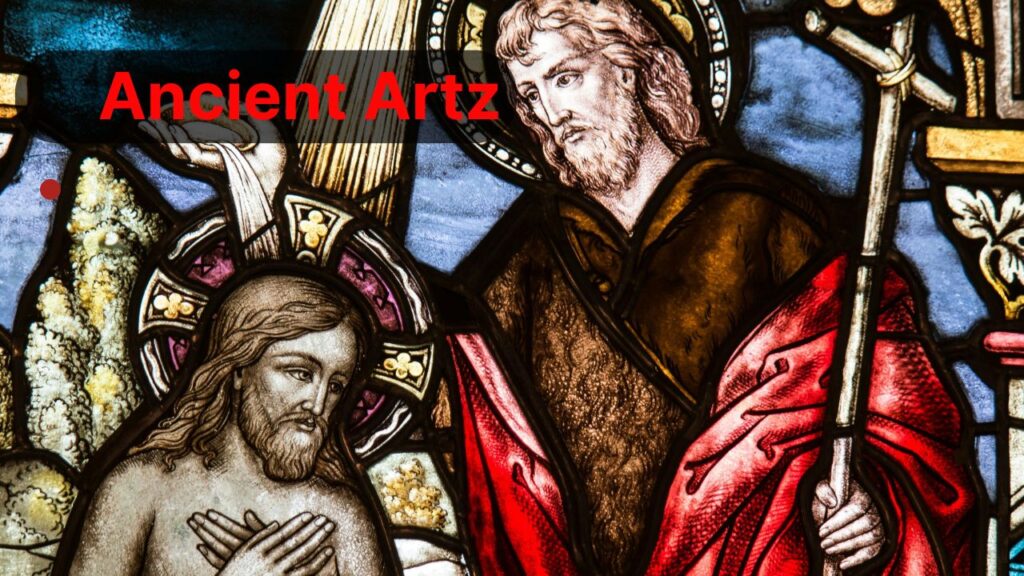To the majority of people, art of the ancient world is represented by cave paintings, sculptures, and monuments, which have survived for centuries. However, one shouldn’t perceive ancient artz as just objects, it speaks about artz culture and its creators. Ancient artz is exciting, it tells about different eras and societies and how they communicated and interpreted reality through creative expression which even now has its influence.
So, in the course of this detailed investigation, we will provide such a visual showcase of antiquity that it will be impossible not to appreciate the artistry and the cultural significance attached to various artifacts. Witness how the early human civilizations developed their art through cave paintings, sculptures, and monumental structures, how those pieces reflected their values, and how those pieces still permeate the art we have today.

What is Ancient Artz? A Gateway to History and Human Expression
Ancient Artz — basically the artistic productions of early human civilizations, cave paintings leading up to later sculptures and everything in between including pottery, textiles etc. These were not just decorative but actually served important roles in the day to day lives of personages. Art made for spiritual purposes, political influence or simply to tell a storytelling more about the society that fashioned it.
In other words, ancient artz served as a language—a way for early man to communicate his ideas and beliefs. This was the legacy they bequeathed in their art, one that has inspired and instructed us still. Being aware of the techniques, materials and themes behind ancient artz, helps us pay respect to the imagination and cunningness from our ancestors.
The History of Ancient Artz: A Timeline Through Time and Culture
The history of ancient art is as extensive as human civilization. From the early cave paintings in Lascaux, France, to the magnificence of Greek sculptures and Roman frescoes, each era introduced new techniques, materials, and themes that mirrored the evolving times.
Prehistoric Art: The Dawn of Human Creativity
Prehistoric art: A form of prehistoric human artistic expression The cave paintings of Lascaux and Altamira -created 30,000 years ago or thereabouts- provide a window on the world inhabited by early humans.
The paintings show animals, people and abstract symbols in painted with natural pigments such as ochre and charcoal The colors and other ornamental information of these compositions indicate that those first artists had a intimately connection to their environment, what shows how talented they were in making arts using only the necessary raw materials.
Apart from cave art, the earliest type of human artwork is Venus figures; also petroglyphs as well. The figures are thought to have been used in fertility rituals that celebrated women and reproduction in early societies.
Ancient Egyptian Art: A Blend of Spirituality and Monumentality
None among ancient arts is as iconic as the art of Egypt. Ancient Egyptian art best known for its large, impressive statues—but it also includes tomb paintings and hieroglyphs—was virtually never created purely for arts sake; each piece of imagery played a vital part in facilitating the transition to the afterlife.
The symbolism of Egyptian art is one of its attributes. There was always something symbolic about each item shown in a work of Egyptian art — the crook and flail held by the pharaoh, or even the ankh which is a symbol of eternal life. This regard for human form was commonly expressed in a stylized, formal way with profile views of figures in stiff, geometric poses – an art style known as “frontal.”
The Egyptians excelled in stone carving, generating impressive statues and reliefs that decorated their temples and tombs. These creative creations had been normally committed to deities or the departed, gratifying both religious and memorial roles.
Among the most big examples of Egyptian art are the Great Sphinx, the Pyramids of Giza, and the elaborately adorned tombs in the Valley of the Kings. These impressive works showcase the Egyptians’ profound faith inside the afterlife and their aspiration to create an enduring legacy.
Mesopotamian Art: The Birthplace of Civilization
Mesopotamia, known as “Cradle of Civilization,” made early complex societies. The art here shows religious themes and the king’s power. These Mysteries of Sculptures, carvings, big buildings showed strength and connection to gods.
A famous Mesopotamian art type is the ziggurat—a big temple with steps that was a religious place. These had detailed carvings showing gods, kings, and daily life.
Another key part of Mesopotamian art is cylinder seals—little carved items used to make designs on clay. They marked identity and status, often showing religious or myth scenes.
The art in Mesopotamia linked closely with religion, focusing on gods like Ishtar and Marduk. Religious images appeared in large buildings to small things like the Code of Hammurabi, a stone pillar with some of the first laws written on it.
Greek and Roman Art: The Pursuit of Perfection
The art of ancient Greece strove for an ideal based on reason, moderation and harmony. Sculptors in ancient Greece, during the classical period produced statues with realistic details to make them come alive showcasing a vigorous physical movement and anatomical accuracy. This is evident in examples such as the Discobolus, a contribution of athletic grace and power.
Additionally, Greek architecture was characterized by its symmetry and proportion as well – featuring temples such the Parthenon in respect to Doric order or including Ionic and Corinthian orders. Pottery: Have you heard of black-figure and red figure styles?Used to see from julius caesar dramas, potteries again same used for mythology scenes— depicting daily lifestyle olympic sports events.
The Romans, who were deeply influenced by Greek art as well,christened themselves a new day in the human perception of reality. And yet, Roman portraiture shows an unbridled realism that fully embraces the flaws of its subjects, a far cry from the idealized forms of Greek sculpture.
Roman artists also excelled in the creation of mosaics and frescoes, which adorned the walls and floors of homes and public buildings.
Mesoamerican Art: Vibrant Colors and Symbolism
Mesoamerica, with civilizations such as the Maya, Aztec and Olmec are some of the most emblematic arts in all history. Mesoamerican art, with that of the Maya in particular when it came to stone carvings (like this sarcophagus), was closely associated with religion and ritual.
Perhaps the best known Mesoamerican art form is stone stelae used by Maya, tall, sculpted monuments that were often erected in treasures to depict kings and gods. These stelae were notionally placed in public spaces and function as both record of the past and religious symbol.
Mesoamerican artists were also really good at ceramics, textiles and metal work making bright full colored items with elaborate creation tones who look cool while still being useful.
Techniques and Materials: The Craftsmanship of Ancient Artz
The things and ways in old artz were many like the cultures they came from. Rocks, mud, metal stuff, and fabric bits were used a lot, and each gave different chances for art to show itself.
- Stone Carving: Many ancient sculptures and monuments, from the pyramids of Egypt to the ziggurats of Mesopotamia, were made from stone. Stone carving allowed artists to create durable, long-lasting works that have survived for thousands of years.
- Fresco Painting: Fresco painting, where pigments are applied to wet plaster, was a popular technique in both Greek and Roman art. This technique enabled the creation of vibrant, durable wall paintings, frequently illustrating mythological themes or scenic landscapes.
- Bronze Casting: Bronze was a popular material for sculptures in both Greece and China, allowing for detailed and durable works of art. Bronze casting techniques enabled artists to create intricate statues that captured the human form in lifelike detail.
- Mosaics: Mosaics, made from small colored tiles or stones, were used to create intricate designs and images, particularly in Roman homes and public buildings. These artworks often depicted scenes from mythology, nature, or daily life.
The Lasting Influence of Ancient Artz on Modern Art
There is no question that ancient artz has had an impact on modern art. Indeed, endless artists nowadays really feed off what has been done; ideas, technique and material. The exploration of this ancient aggregate has facilitated the evolution and services creators to rediscover the themes that have shaped humanity for centuries, by reinterpreting them in modern perspectives.
Ancient artz whether being fetched back by revisiting classical techniques or digging further into ancient symbolism, is definitely alive and well in the artistic world today. Museums and cultural institutions have helped preserve these creations to make sure that the creativity of our ancestors will always be studied by future generations.
Conclusion: Ancient Artz—A Legacy That Endures
Ancient artz is not just a relic of the past; it is a living testament to the creativity, beliefs, and ingenuity of early civilizations. From the symbolic tomb paintings of Egypt to the lifelike sculptures of Greece, these artworks offer a window into the minds and hearts of the people who created them.
As we continue to study and preserve these works, we gain a deeper understanding of our shared human history and the enduring power of art to inspire, educate, and connect us across time. Whether you’re an art enthusiast, a history buff, or simply curious about the world around you, the world of ancient artz offers.


